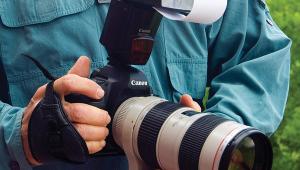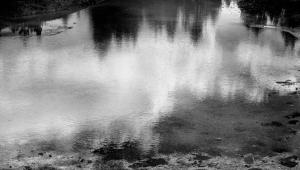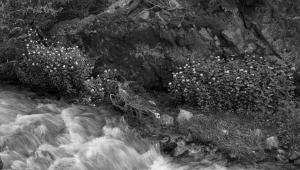What Happened to My Images ??!!
![]()
What Happened to My Images ??!!
Corrupted Disks and Rescue Strategies
by George Schaub
I am not sure if it's happened to you, but it's happened to me. After having spent an afternoon shooting with my digital camera everything suddenly stopped. While the counter in my camera LED showed that I had plenty of memory space left images taken would simply not record to the card. Error messages flashed, the red record light kept flickering and all I could think about was all those images that were lost. (It's funny but the images lost always seem to be the best you ever made.) I turned the camera off, removed the card and placed another one into the slot--and that worked fine. I put the card in a safe place and all I could think about was getting back to my computer to see what could be salvaged.
At least I did one thing right--I stopped using the card immediately. According to Lexar, the best thing to do is turn off the camera and immediately remove the card. Even if you could keep making images (and in my case I couldn't) the more you add to the card after a misfire the more likely it is that you will be over-writing the image files already on it.
Why would a card go corrupt? It might be caused by inserting or removing the card while the camera is turned on. This could cause a short and misfire on the card. It could be that the card was not formatted with the camera you are using. Always re-format using the camera, and don't just count on the computer program or drag the image files from the card to the trash after downloading. And you simply might have not re-formatted the card after downloading, even though you have erased the images using your camera's "trash" icon as you shot. This can cause the card to go through a kind of fragmentation, which will eventually inhibit its ability to record correctly.
Back to my tale of woe (which did have a happy ending.) After the day's shooting I placed my card in the card reader attached to my computer and downloaded what was there. I saw image files and breathed a sigh of relief. But then I opened one and here's what I got:

Frankly I've never seen junk like this, and as interesting as it might be it certainly wasn't what I had in mind when photographing.
I put the card into the reader before launching, Lexar's Image Rescue, which I had previously loaded but had never used. I then launched the program and was given a number of choices, including levels of "searches", from High to Low to Extensive. This image junk looked serious, so I chose the Low Level search, which despite its name performs a more thorough search than "High." I then clicked on the Image Recovery icon and selected a folder for the images. I then clicked on Open Image Folder and voila, there they were in their original form. To top things off after recovery I clicked on Card Test, which performs a software and hardware test of the card. If it's a hardware issue you should not use the card again and contact the manufacturer. The test gives you a report of the potential problem. I then clicked on the Defragment button for the final cleanup and Format to prepare it for new tests.
Here's the rescued image from the shoot.

Did I get all my images back from the day's work? No, a few were lost
in cyberspace. But at least it was not a total loss. The lessons learned for
me were:
1) Don't panic
2) Always have an image rescue program loaded on your computer (even if you
never have to use it.)
3) Keep extra cards with me at all times.
- Log in or register to post comments












































